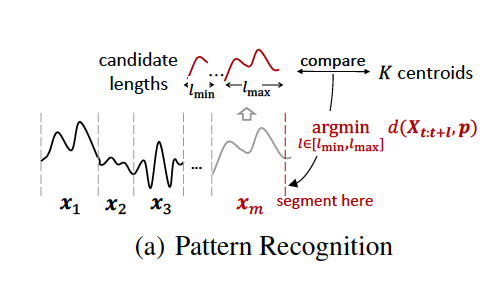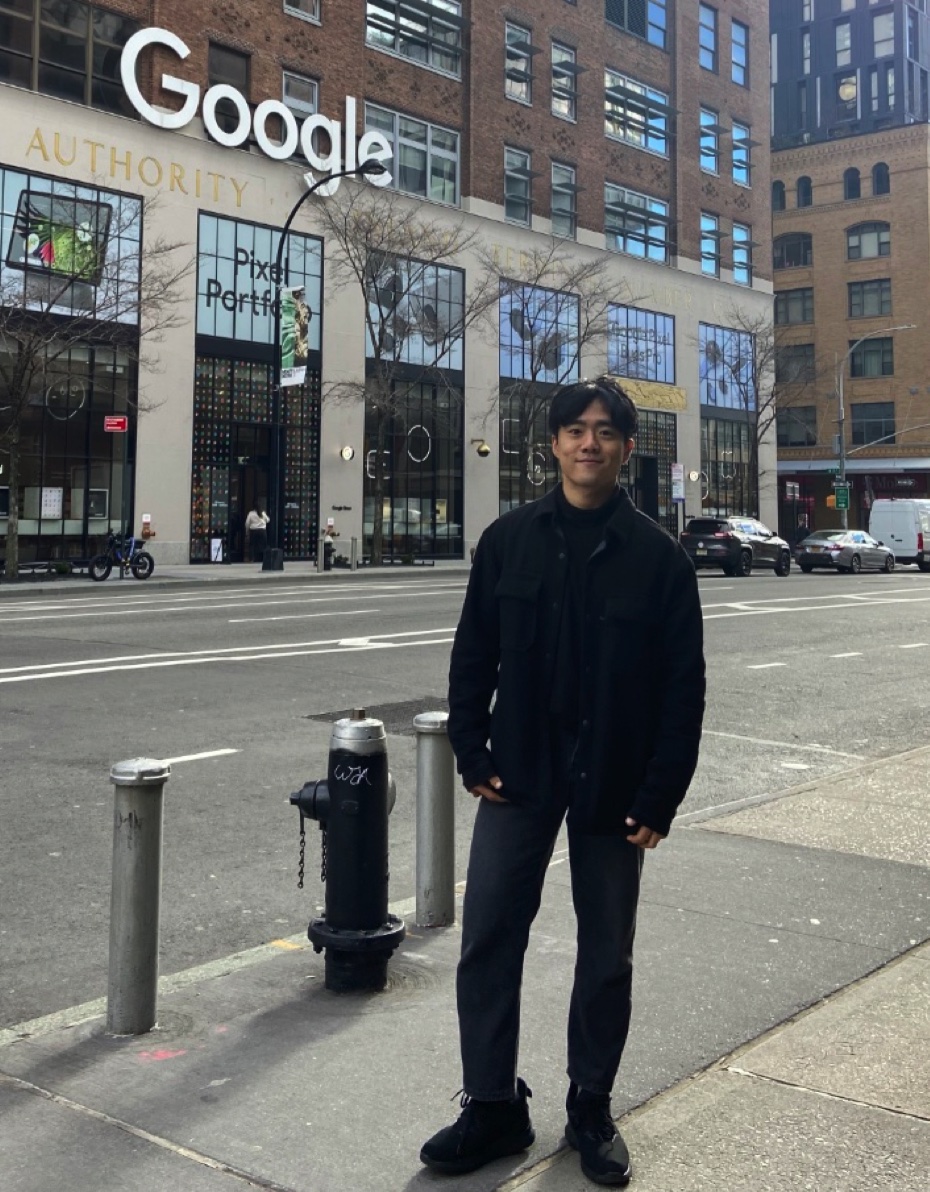Generative Learning for Financial TS with Irregular and Scale-Invariant Patterns
Contents
- Abstract
- Introduction
- Related Work
- Problem Statement
- FTS-DIffusion Framwork
- Pattern Recognition
- Pattern Generation
- Pattern Evolution
Abstract
Limited data in financial applications
\(\rightarrow\) Synthesize financial TS !!
- Challenges: Irregular & Scale-invariant patterns
( Existing approaches: assume regularity & uniformity )
FTS-Diffusion
To model Irregular & Scale-invariant patterns that consists of 3 modules
- (1. Patterrn Recognition) Scale-invariant pattern recogntion algorithm
- to extract recurring patterns that vary in duration & magnitude
- (2. Pattern Generation) Diffusion-based generative network
- to synthesize segments of patterns
- (3. Pattern Evolution)
- model the temporal transition of patterns
1. Introduction
Problem in Finance data
- (1) dearth of data & low signal-to-noise ratio
- (2) cannot run experiments to obtain more data
Solution: Data Augmentation, using diffusion model
Still, challenge in “finance TS” … Why??
\(\rightarrow\) Two reasons:
- (1) Lack of regularity
- (2) Scale-invariance
- financial TS appear to conatin more subtle patterns that repeat themselves with varyring duration and magnitude


Solution
Deconstruct financial TS into 3 prong process
- (1) Pattern Recognition
- to identify irregular & scale-invariant patterns
- (2) Generation
- to synthesize segments of patterns
- (3) Evolution
- to connect the generated segments
Contribution
-
Identify & Define 2 properties in TS finance
- Irregularity
- Scale-invariance
Propose novel FTS-Diffusion framework
-
Three modules
- (1) Pattern Recognition: based on SISC (Scale-Invariant Subsequence Clustering) algorithm
- incorporate DTW to capture irregular patterns
- (2) Generation: consists of a diffusion-baseed network
- conditional on the patterns learned by SISC
- (3) Evolution: made up of pattern transition network
- produce temporal evolution of consecutive patterns
- (1) Pattern Recognition: based on SISC (Scale-Invariant Subsequence Clustering) algorithm
-
Experiments on real world finance TS
2. Related Work
DGM (Deep Generative Modeling) in TS
- TimeVAE (2021): VAE to model trend & seasonality in TS
- RCGAN (2017) & MV-GAN(2020) : GAN for medical TS
- TimeGAN (2019): GAN for general TS
- QuantGAN (2020): GAN for financial TS
- CSDI (2021): Score-based diffusion … unconditional version can be used as generative model
- DiffWave (2021) & BinauralGrad (2022): Generate waveform TS with diffusion models
\(\rightarrow\) Common Limitation: Model TS with REGULAR patterns
3. Problem Statement
(1) Unique characteristics of Financial TS
Propose a novel framework to model (1) irregular & (2) scale-invariant TS
Notation
-
\(\boldsymbol{X}=\left\{\boldsymbol{x}_1, \ldots, \boldsymbol{x}_M\right\}\) : MTS of \(m\) segments
- \(\boldsymbol{x}_m=\left\{x_{m, 1}, \ldots, x_{m, t_m}\right\}\).
- Total Length: \(T=\sum_{m=1}^M t_m . \boldsymbol{x}_m\)
-
Sampled from a conditional distribution \(f(\cdot \mid p, \alpha, \beta)\)
- pattern \(p \in \mathcal{P}\),
- duration is scaled by \(\alpha\) and magnitude scaled by \(\beta\).
\(\rightarrow\) \(\boldsymbol{x}_m\) will be statistically similar to its underlying pattern \(p\) while allowing for adjustments in duration and magnitude.
To model the dynamics across patterns, we employ a Markov chain
- Tuple \((p, \alpha, \beta)\) : State
- \(Q\left(p_j, \alpha_j, \beta_j \mid p_i, \alpha_i, \beta_i\right)\) : State transition probabilities
(2) Problem Statement
Seek to operationalize the structure laid out in Sec. 3.1
No knowledge of …
- the segments \(\left\{\boldsymbol{x}_m\right\}_{m=1}^M\)
- the set of scale-invariant patterns \(\mathcal{P}\)
- the scaling factors \(\alpha\) and \(\beta\)
- the transition probabilities \(Q\left(p_j, \alpha_j, \beta_j \mid p_i, \alpha_i, \beta_i\right)\).
Goal : develop a data-driven framework to accomplish the following:
- (Pattern Recognition)
- identify the patterns \(\mathcal{P}\)
- group segments into clusters according to their patterns \(p \in \mathcal{P}\);
- (Pattern Generation)
- learn the distribution \(f(\cdot \mid p, \alpha, \beta), \forall p \in \mathcal{P}\);
- (Pattern Evolution)
- learn the pattern transition probabilities \(Q\left(p_j, \alpha_j, \beta_j \mid p_i, \alpha_i, \beta_i\right)\).
4. FTS-Diffusion Framework

(1) Pattern Recognition
Goal: Identify Irregular & Scale-invariant patterns
Propose novel Scale-Invariant Subsequence Clusterint (SISC) algorithm
-
To partition entire TS into segments of variable length … itno \(K\) clusters
( same cluster = similar shape (DTW-based) )
- Use K-means
- Greedy segmentation strategy

Distance metric: \(d(\cdot, \cdot)\)
- DTW: Robust to varying lengths & magnitudes
- \(D T W(\boldsymbol{x}, \boldsymbol{y}):=\min _{A \in \mathcal{A}}\langle A, \Delta(\boldsymbol{x}, \boldsymbol{y})\rangle\).
- \(A\) : Alignment between two sequences in the set of all possible alignments
- \(\Delta(x, y)=\left[\delta\left(x_i, y_j\right)\right]_{i j}\) : Pointwise distance matrix between two sequences \(\boldsymbol{x}\) and \(\boldsymbol{y}\).
(2) Pattern Generation
Goal: Learn pattern-conditioned temporal dynamices
Propose a pattern generation module \(\theta\)
[First network] Pattern-conditioned diffusion network
- Conditional denoising process
- Forward: \(\boldsymbol{x}^N=\boldsymbol{x}^0+\sum_{i=0}^{N-1} \mathcal{N}\left(\boldsymbol{x}^{i+1} ; \sqrt{1-\beta}\left(\boldsymbol{x}^i-\boldsymbol{p}\right), \beta I\right)\)
- Backward: \(\boldsymbol{x}^0=\boldsymbol{x}^N-\sum_{i=0}^{N-1} \epsilon_\theta\left(\boldsymbol{x}^{i+1}, i, \boldsymbol{p}\right)\)
[Second network] Scaling AE
- learn the transformation btw variable length \(x\) and fixed length \(x^{0}\)
\(\rightarrow\) Jointly train two networks
- \(\mathcal{L}(\theta)=\mathbb{E}_{\boldsymbol{x}_m}\left[ \mid \mid \boldsymbol{x}_m-\hat{\boldsymbol{x}}_m \mid \mid _2^2\right]+\mathbb{E}_{\boldsymbol{x}_m^0, i, \epsilon}\left[ \mid \mid \epsilon^i-\epsilon_\theta\left(\boldsymbol{x}_m^{i+1}, i, \boldsymbol{p}\right) \mid \mid _2^2\right]\).
(3) Pattern Evolution
Pattern evolution network
\(\left(\hat{p}_{m+1}, \hat{\alpha}_{m+1}, \hat{\beta}_{m+1}\right)=\phi\left(p_m, \alpha_m, \beta_m\right)\).
- where \(\left(\hat{p}_{m+1}, \hat{\alpha}_{m+1}, \hat{\beta}_{m+1}\right)\) denotes the next pattern & scales in length and magnitude.
Loss function
- \(\mathcal{L}(\phi)=\mathbb{E}_{\boldsymbol{x}_m}\left[\ell_{C E}\left(p_{m+1}, \hat{p}_{m+1}\right)+ \mid \mid \alpha_{m+1}-\hat{\alpha}_{m+1} \mid \mid _2^2+ \mid \mid \beta_{m+1}-\hat{\beta}_{m+1} \mid \mid _2^2\right]\).
